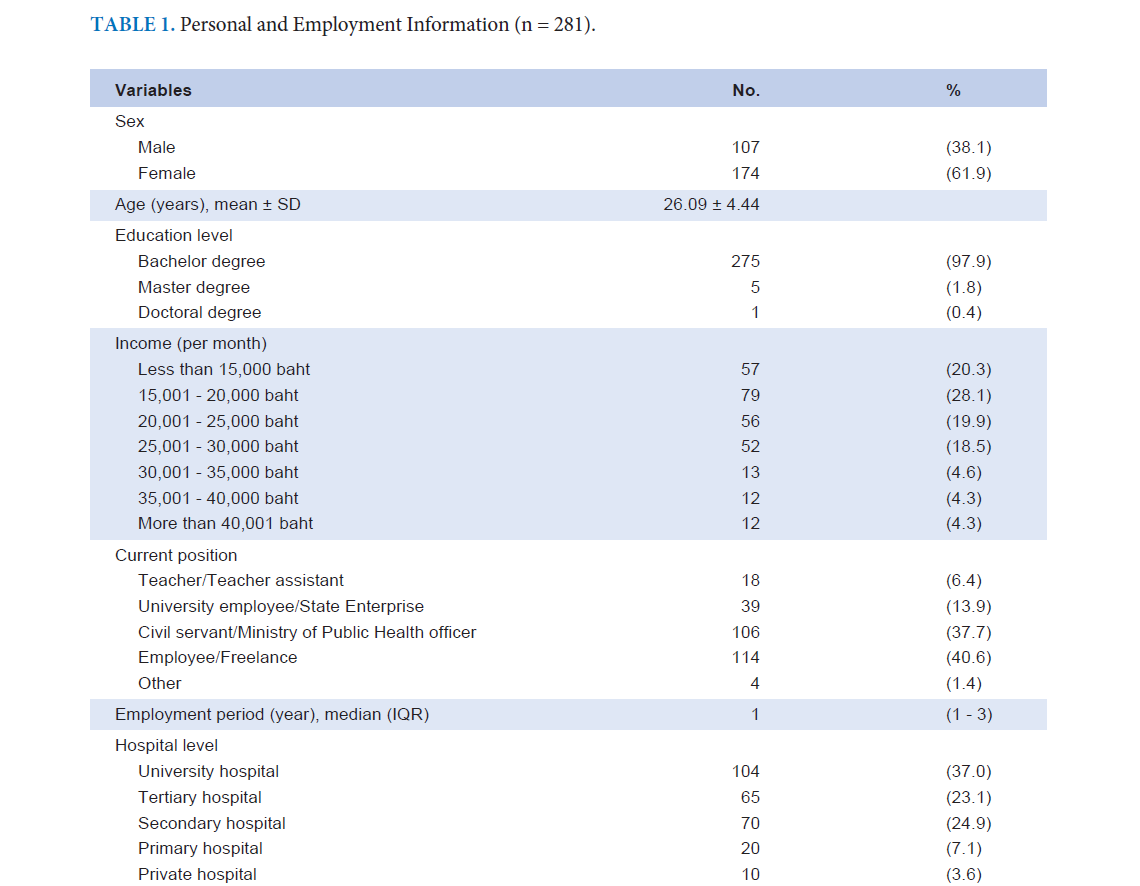The Perceptions of Roles and Understanding about Forensic Evidence and Crime Scene Preservation of Thai Paramedics
DOI:
https://doi.org/10.33192/Smj.2021.85Keywords:
crime scene, forensic evidence, paramedic, role, understandingAbstract
Background: Paramedicine is a new profession in Thailand. The most important role is to provide pre-hospital advanced life support for emergency patients. So, they often need to assist the injured at crime scenes. However, many do not know their role or how to preserve the forensic evidence and crime scene. Currently in Thailand, their role in forensic evidence and crime scene preservation (FECSP) is unclear. Hence, the management of the evidence and the crime scene depends on individual knowledge and experience.
Objectives: 1. To study the perceptions of roles and understanding of FECSP of Thai paramedics. 2. To study the problems, obstacles, and solutions for development of Thai paramedics FECSP practices. 3. To study the factors affecting the perceptions of roles and understanding of FECSP in Thai paramedics.
Method: Thai paramedics data over the country registered with National Institute for Emergency Medicine (NIEMS) during 1st March – 31st March 2021 was collected in this cross-sectional survey. The questionnaires were sent as Google forms to them by e-mail.
Results: 382 questionnaires were sent, and 281 responses (74%) were obtained. Most were female (61.9%). The average age was 26.09±4.44 years. The most common crime scene experienced was traffic accidents. Most had never had additional training related to forensic science. The perceptions of roles and understanding about FECSP were at the highest level. The most common problem and hindrance about FECSP was no FECSP law and the most common solution for improvement of the FECSP was the standard FECSP guideline development. Hospital level was found to be a factor related to the perceptions of roles of FECSP in Thai paramedics. Average score of a cohort who worked at university hospital was higher than those working at tertiary hospitals 0.220 (B = -0.220 , p-value = 0.018). Additionally, hospital level was also a factor concerning the understanding about FECSP of Thai paramedics. The average score of cohorts who worked at university hospitals was greater than those working in primary or secondary hospitals 0.197 (B = -0.197, p-value = 0.022).
Conclusion: The paramedics had the perception of the roles and understanding about FECSP at the highest level. Hospital level was a significant factor related to the perception of the roles and understanding about FECSP. Relevant health institutes should develop standard guidelines and promote FECSP training.
References
2. Sawyer S, Coles J, Williams A, Lucas P, Williams B. Paramedic students' knowledge, attitudes, and preparedness to manage intimate partner violence patients. Prehosp Emerg Care 2017;21(6):750-60.
3. Asci O, Hazar G, Sercan I. The approach of prehospital health care personnel working at emergency stations towards forensic cases. Turk J Emerg Med 2015;15:131-5.
4. Best JW, Kahn JV. Research in Education (9th ad.). New Delhi: Prentice Hall of India Private Limited; 2007.
5. Textbook of clinical research fourth edition. revised and expanded. Bangkok: Faculty of Tropical Medicine, Mahidol University, 2011.
6. Khamya A. Study and compare the understanding of forensic evidence preservation at the scene [dissertation]. Bangkok: Suan Sunandha Rajabhat University; 2017.
7. Apiratwarakul K, Jumroenketpratheep K, Ienghong K, Ruttanaseeha W, Buranasakda M, Bhudhisawasdi V. Hand hygiene of emergency medical service healthcare providers. J Med Assoc Thai 2020;103:8-10.
8. Sittichanbuncha Y, Prachanukool T, Sarathep P, Sawanyawisuth K. An emergency medical service system in Thailand: providers’ perspectives. J Med Assoc Thai 2014;97:1016-21.
9. Sadudee S, Niyomdecha M. Understanding of Forensic Medical Evidence by Sawangprateep Sriracha Rescue Volunteer in Chonburi Province. JCFS 2018;4:169-79.
10. Saenkaew K. The Study on Knowledge and Understanding of Crime Scene Investigation of Police Enquiry Officers in Nakhon Pathom Province. RDIBRU 2019;14:121-36.
11. Suwanchasri P, Choosakoonkriang S, Supaluknari S, Imsin A. Understanding Of Forensic And Medical Evidence By Profesional Nurses In Emergency Department Of Phramongkutklao Hospital. Veridian E Journal 2016;3:1-12.
12. Suntirukpong A, Mann RW, DeFreytas JR. Postmortem scavenging of human remains by domestic cats. Siriraj Med J 2017;69:384-7.
13. Suttipasit P. Comparison of two seminal detection methods, the acid phosphatase test and the zinc test for sensitivities in sexually assaulted females positive of sperm. Siriraj Med J 2015;67.
14. Fongsiripaibul V. Determination of posterior fourchette coital wounds in rape victims by using toluidine blue. Siriraj Med J 1999;5:27-35.

Published
How to Cite
Issue
Section
License
Authors who publish with this journal agree to the following conditions:
Copyright Transfer
In submitting a manuscript, the authors acknowledge that the work will become the copyrighted property of Siriraj Medical Journal upon publication.
License
Articles are licensed under a Creative Commons Attribution-NonCommercial-NoDerivatives 4.0 International License (CC BY-NC-ND 4.0). This license allows for the sharing of the work for non-commercial purposes with proper attribution to the authors and the journal. However, it does not permit modifications or the creation of derivative works.
Sharing and Access
Authors are encouraged to share their article on their personal or institutional websites and through other non-commercial platforms. Doing so can increase readership and citations.














